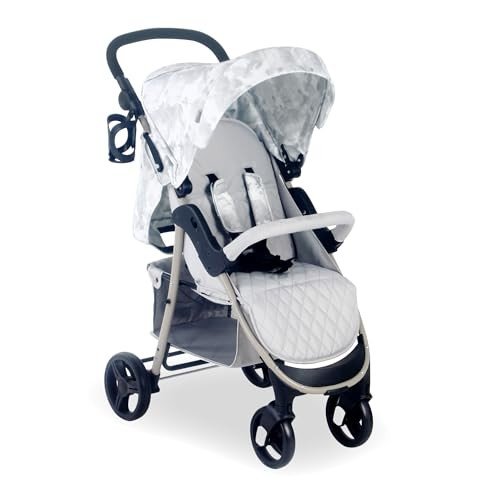Understanding Pushchairs and Prams: A Comprehensive Guide
When it concerns baby mobility, the terms "pushchair" and "pram" are often used interchangeably. Nevertheless, they represent distinct kinds of baby carriers, each crafted for specific phases of a child's advancement and differed adult needs. This post digs into the crucial distinctions in between pushchairs and prams, their functions, types, and considerations for new parents.
What is a Pushchair?
A pushchair, typically referred to as a stroller in some regions, is developed for kids who can sit up independently. Normally, click this site are modern, lightweight, and have a seat that can be reclined for included comfort. They might likewise include a five-point harness to make sure the kid's security while on the go.
Secret Features of Pushchairs
- Lightweight Design: Most pushchairs are made from lighter products, making them easy to steer and transport.
- Adjustable Seats: Many models offer recline alternatives, catering to resting or active positions.
- Canopy: Most pushchairs come equipped with a sunshade or canopy to protect the kid from sun direct exposure.
- Storage Space: They usually consist of a lower storage basket, best for holding diaper bags or shopping.
Common Types of Pushchairs
- Standard Pushchairs: Traditional alternatives appropriate for children who can sit separately.
- Umbrella Strollers: Lightweight, compact, and simple to fold; ideal for traveling.
- All-Terrain Strollers: Built with larger wheels for off-road capabilities and smooth trips on varied surface areas.
- Travel Systems: Combines a stroller and an infant vehicle seat, allowing parents to move their child effortlessly.
What is a Pram?
A pram, brief for "perambulator," is mainly designed for infants, typically from birth up until around six months. Prams are structured with a flat lying position that supports a newborn's anatomy, guaranteeing they are cradled correctly.
Key Features of Prams
- Flat Bed Design: Prams have a fully flat bed, which is important for young babies who need to lie flat for convenience and health.
- Stylish Aesthetics: Many prams boast vintage or traditional designs, typically seen with luxurious materials and appealing surfaces.
- Suspension System: Quality prams often consist of a suspension system to provide a smoother trip over rough surface.
- Extended Canopy: Extended sun protection and rain covers are common.
Typical Types of Prams
- Traditional Prams: Featuring a conventional design, these are often styled to stimulate fond memories.
- Convertible Prams: These can quickly switch from a pram to a pushchair and normally grow with the child.
- Light-weight Prams: More compact than traditional prams, making them simpler to carry.
Differences Between Pushchairs and Prams
| Feature | Pushchair | Pram |
|---|---|---|
| Use Case | For children who can sit up | For newborns and babies |
| Style | Upright seat with reclining option | Flat bed for resting |
| Weight | Normally lighter | Heavier due to tough building |
| Density | Folds quickly and compactly | May be bulkier, depending upon design |
| Age Range | 6 months to 4 years or older | Birth to around 6 months |
| Price Range | More affordable options offered | Frequently more costly due to products and style |
Picking Between a Pushchair and Pram
When selecting between a pushchair and a pram, several aspects necessitate consideration:
- Age of the Child: Newborns need a pram; older babies and young children will be more comfy in a pushchair.
- Way of life Needs: Parents who travel often may choose light-weight pushchairs, while those trying to find comfort in design might lean towards prams.
- Budget: Prams can range from moderately to high-priced; trustworthy pushchairs can accommodate budget-conscious consumers.
- Storage Space: Consider how easily the selected model can suit your vehicle trunk or home storage.
Frequently asked questions
Q1: Can I use a pushchair for a newborn baby?
While certain pushchairs are developed with reclining features that may accommodate infants, it is normally advised to utilize a pram or specially developed infant safety seat for newborns.
Q2: Are travel systems worth the financial investment?
Travel systems can offer convenience by integrating an automobile seat and a stroller. They permit seamless shift from vehicle to stroller, which numerous parents find invaluable.
Q3: How do I preserve my pushchair or pram?
Frequently clean the fabric, check for mechanical issues, and oil the wheels. Make certain to follow particular care guidelines provided by the manufacturer.
Q4: What is the weight limit for pushchairs and prams?
Weight limitations differ by model: generally, pushchairs accommodate as much as 50 lbs, while prams fit babies approximately 30 pounds. Constantly describe the producer's guidelines.
Q5: Is it important to have a rain cover for my pushchair or pram?
Yes, a rain cover can protect your kid from rain and wind, maintaining comfort while avoiding moist clothing.
In summary, pushchairs and prams serve essential but distinct functions in the mobility landscape for moms and dads and caretakers. Choosing the best model depends upon the kid's age, way of life requirements, and household preferences. By comprehending the attributes, advantages, and differences in between pushchairs and prams, moms and dads can make informed decisions that make sure comfort and safety for their child. Whether strolling through the park or browsing hectic streets, the best movement solution is out there waiting.

